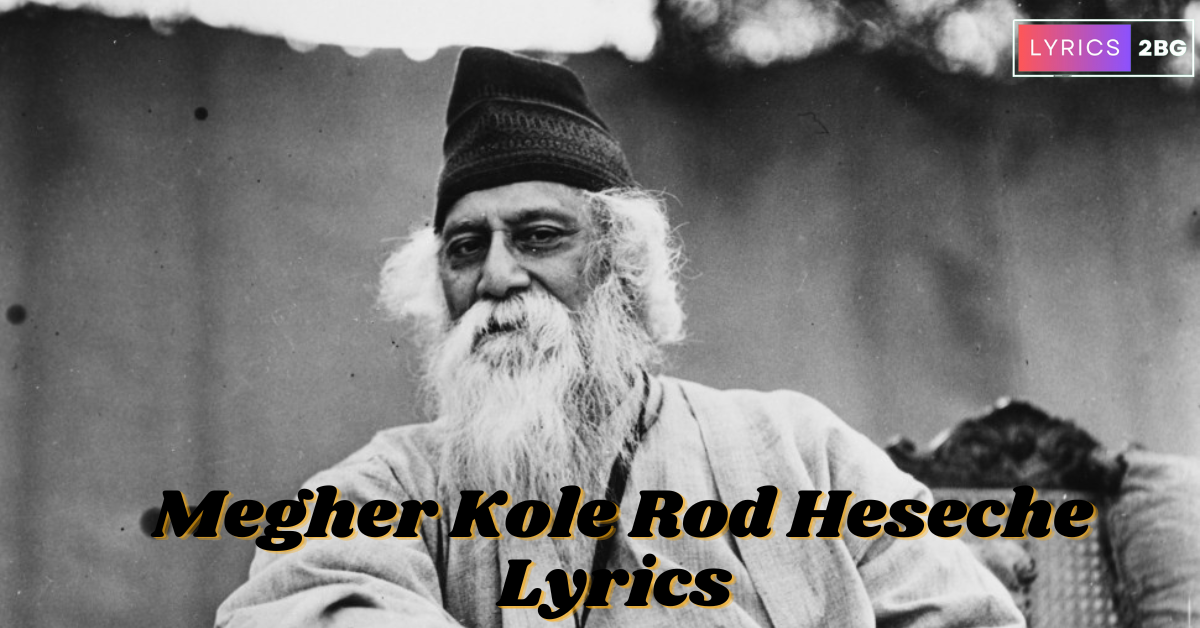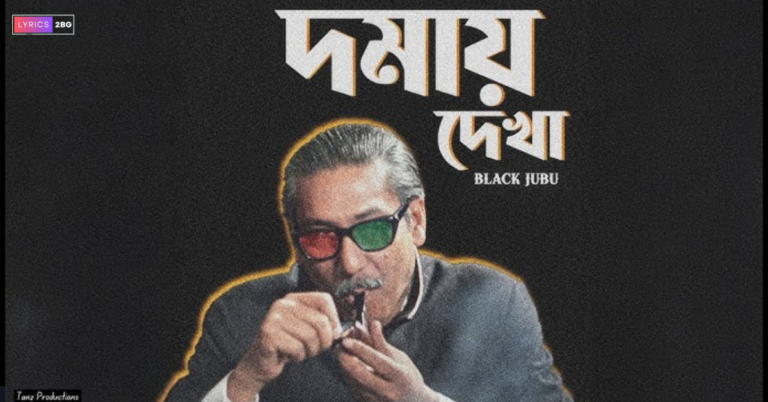Megher Kole Rod Heseche Lyrics | মেঘের কোলে রোদ হেসেছে | Asha Bhosle
Megher Kole Rod Heseche Lyrics
মেঘের কোলে রোদ হেসেছে,
বাদল গেছে টুটি, আহা, হাহা, হা।
আজ আমাদের ছুটি ও ভাই,
আজ আমাদের ছুটি, আহা, হাহা, হা।
মেঘের কোলে রোদ হেসেছে,
বাদল গেছে টুটি, আহা, হাহা, হা।
কী করি আজ ভেবে না পাই
পথ হারিয়ে কোন বনে যাই,
কোন মাঠে যে ছুটে বেড়াই
সকল ছেলে জুটি, আহা, হাহা, হা।
মেঘের কোলে রোদ হেসেছে,
বাদল গেছে টুটি, আহা, হাহা, হা।
কেয়া পাতার নৌকো গড়ে
সাজিয়ে দেবো ফুলে,
তালদিঘিতে ভাসিয়ে দেবো
চলবে দুলে দুলে।
রাখাল ছেলের সঙ্গে ধেনু
চরাবো আজ বাজিয়ে বেনু,
রাখাল ছেলের সঙ্গে ধেনু
চরাব আজ বাজিয়ে বেনু,
মাখবো গায়ে ফুলের রেণু
চাঁপার বনে লুটি, আহা, হাহা, হা।
মেঘের কোলে রোদ হেসেছে,
বাদল গেছে টুটি, আহা, হাহা, হা।
আজ আমাদের ছুটি ও ভাই,
আজ আমাদের ছুটি, আহা, হাহা, হা।
মেঘের কোলে রোদ হেসেছে,
বাদল গেছে টুটি, আহা, হাহা, হা
Meaning of Megher Kole Rod Heseche Lyrics
Megher kole rod heseche lyrics means “The cloud hath rested on the pitch” in English. The song is frequently regarded as a metaphor for the arrival of happiness and optimism following a time of misery and hopelessness. The song’s lyrics talk on how the entrance of the cloud makes the Earth seems to come alive once again and brings rain, washing away the sorrows of the past. Ultimately, the song is about the ability of nature to regenerate and revive, as well as the hope it offers those who are feeling lost or alone..
In megher kole rod heseche lyrics, the singer rejoices in the fact that the clouds have dispersed, and the sky is now clear. This is symbolized by the phrase “মেঘের কোলে রোদ হেসেছে” (the tears of the clouds have turned into laughter). The singer and their companions, likely friends or family, are celebrating a holiday together, expressing their joy with exclamations like “আহা, হাহা, হা” (aha, haha, ha).
Megher kole rod heseche lyrics also mention a sense of freedom and adventure, with lines about getting lost on a path in the forest and playing in a meadow. The singer talks about making boats out of leaves and decorating them with flowers, possibly referring to a playful activity by a river or pond. There’s also a mention of playing musical instruments and singing along with other boys.
The overall theme of megher kole rod heseche lyrics seems to be about embracing the joys of life, celebrating nature’s beauty, and reveling in the simple pleasures of a carefree day with loved ones. It captures the essence of a fun-filled and harmonious moment in time, where worries are set aside in favor of enjoying the present moment.
About the Author of the Song
Rabindranath Tagore, a renowned Indian poet and Nobel Prize winner, is the author and composer of the well-known Bengali song “Megher Kole Rod Heseche.” The song was initially released in 1922 as part of Tagore’s “Bolai” collection of songs and poems.
Megher kole rod heseche lyrics is renowned for its metaphorical and visual expression of the natural world’s beauty and its capacity to engender hope and regeneration. The song’s melody is also incredibly lovely, with a straightforward structure that nicely matches megher kole rod heseche lyrics.
“Megher Kole Rod Heseche” is regarded as one of Tagore’s most well-known works and has evolved over time into one of the most cherished and enduring melodies in the Bengali language. Recognition on a national level: In 2011, the Indian government named “Megher Koley Rod Heseche” as one of the most well-known and enduring songs in the nation. It was also added to the list of songs that will be taught in schools all around the nation.

Bengal and other countries have benefited much from the song “Megher Koley Rod Heseche” in terms of culture. Tradition associated with the monsoon season: The song is frequently performed in Bengal around this time, and it has earned a loyal following. It is performed live, used as the theme music for television programmers, and even played on the radio. Some of its prominent effects are as follows:
Popularization of Tagore’s work: One of Tagore’s most well-known works, “Megher Koley Rod Heseche,” has contributed to the popularity of his work both inside and outside of Bengal. Although Tagore was already well-known as a poet and author in Bengal, this song contributed to his emergence as a national treasure. Several artists have been inspired by the song to develop their own works based on its ideas and motifs. These other artists include musicians, dancers, and filmmakers. Many musicians from Bengal and other countries have also covered it.







